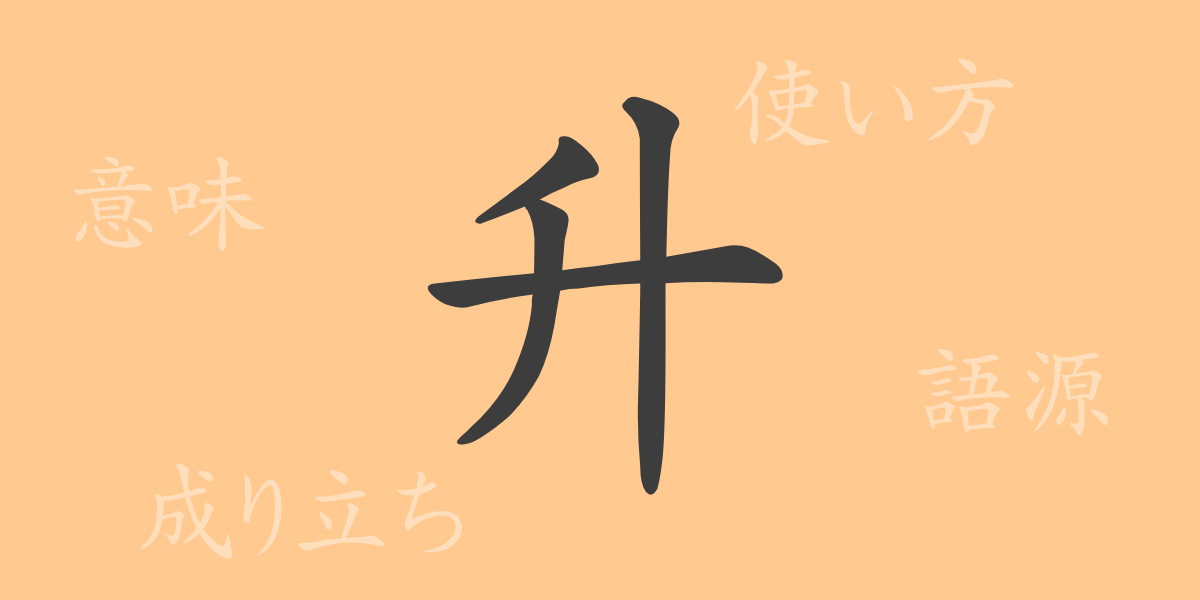The Japanese writing system, with its beauty and complexity, captures attention worldwide. Among the frequently used Kanji characters, ‘升’ (ます, しょう) plays an indispensable role in daily life in Japan. This article delves into the character ‘升’, exploring its origins, meanings, usages, pronunciation, and related phrases and idioms to uncover its unique appeal.
Origins of 升 (ます, しょう)
The Kanji ‘升’ evolved from a symbol used in ancient China to denote a unit of measurement. It originally represented the shape of a vessel with a specific volume and over time, it has settled into the current form ‘升’. The history and evolution of this character vividly reflect how language evolves with culture.
Meanings and Usages of 升 (ます, しょう)
Originally a unit of volume, ‘升’ is now used in various meanings in modern Japanese. For example, it can denote a square on a board game, or used as a verb meaning ‘to rise’ or ‘to promote’, as in promotions or upgrades. It also appears in everyday conversations as a metaphorical expression.
Pronunciation, Stroke Count, and Radical of 升 (ます, しょう)
Despite its simple structure, the Kanji ‘升’ plays a significant role in the Japanese language.
- Pronunciation: The On’yomi (Sino-Japanese reading) is ‘しょう’, and the Kun’yomi (native Japanese reading) is ‘ます’.
- Stroke Count: ‘升’ consists of 4 strokes.
- Radical: It belongs to the ‘木’ (wood) radical.
Phrases, Idioms, and Proverbs Using 升 (ます, しょう) and Their Meanings
There are numerous idioms and proverbs that include ‘升’ in Japanese. For example, ‘升目’ refers to a square on a Go board, and the proverb ‘一寸の虫にも五分の魂’ uses ‘一寸’ (a small length) and ‘五分’ (a volume measure) to convey that even small creatures have their own worth and capabilities.
Conclusion on 升 (ます, しょう)
Through this article, we have unraveled various aspects of the character ‘升’. From its traditional use as a measurement unit to its varied applications in modern phrases and idioms, ‘升’ continues to be a historical and cultural element alive in the Japanese language. Understanding the history and meanings embedded in this commonly seen character can deepen our appreciation and understanding of the language.

























